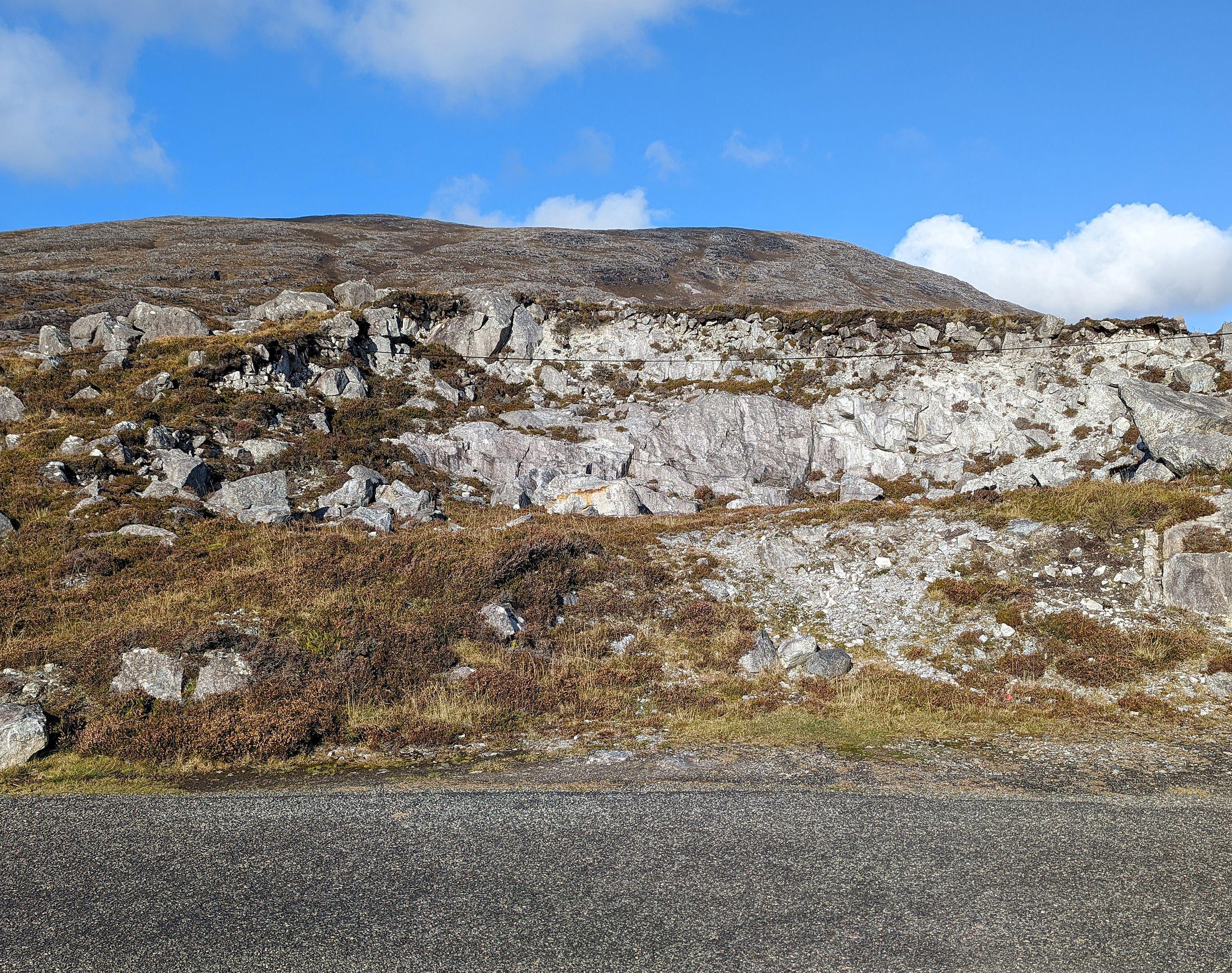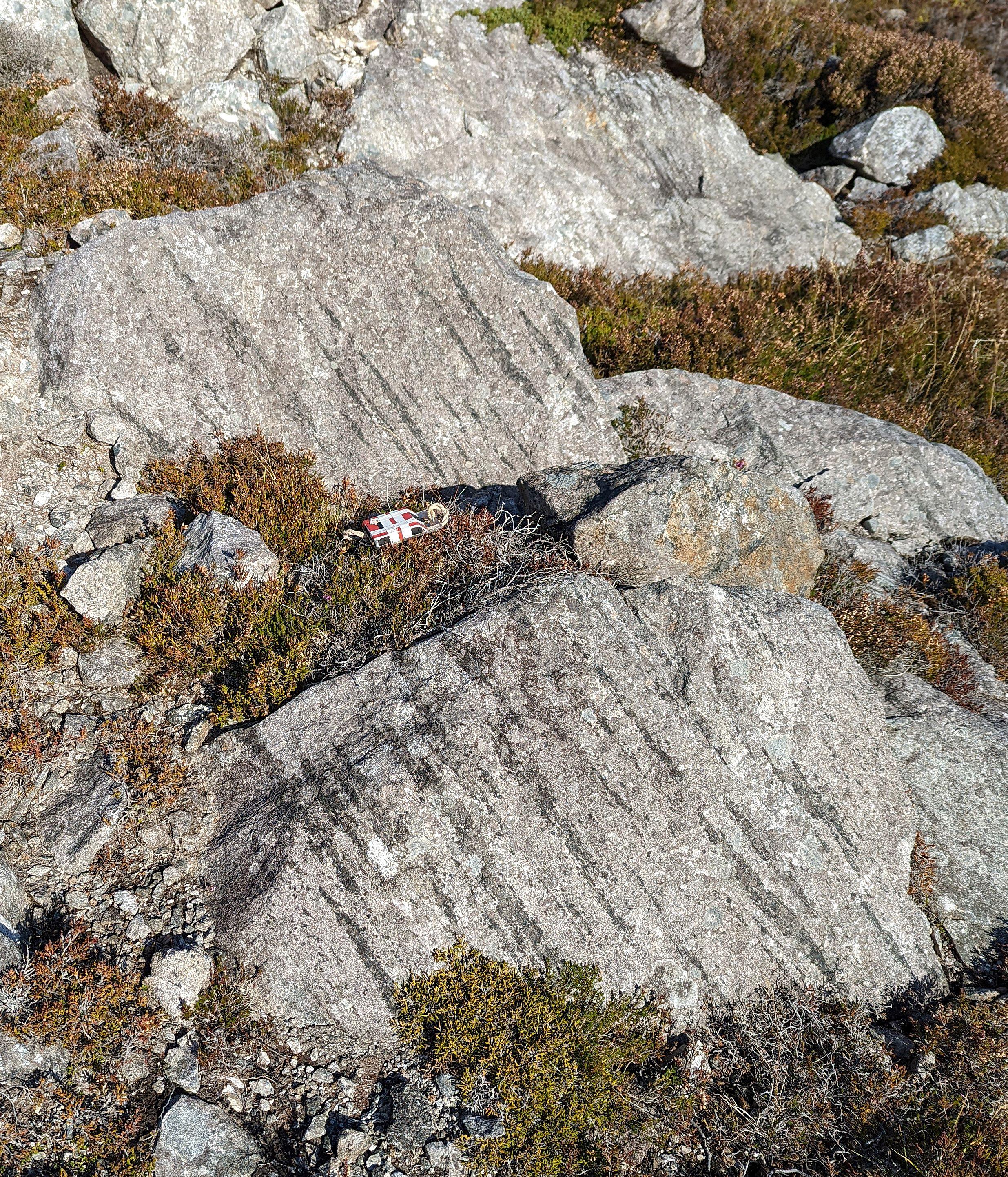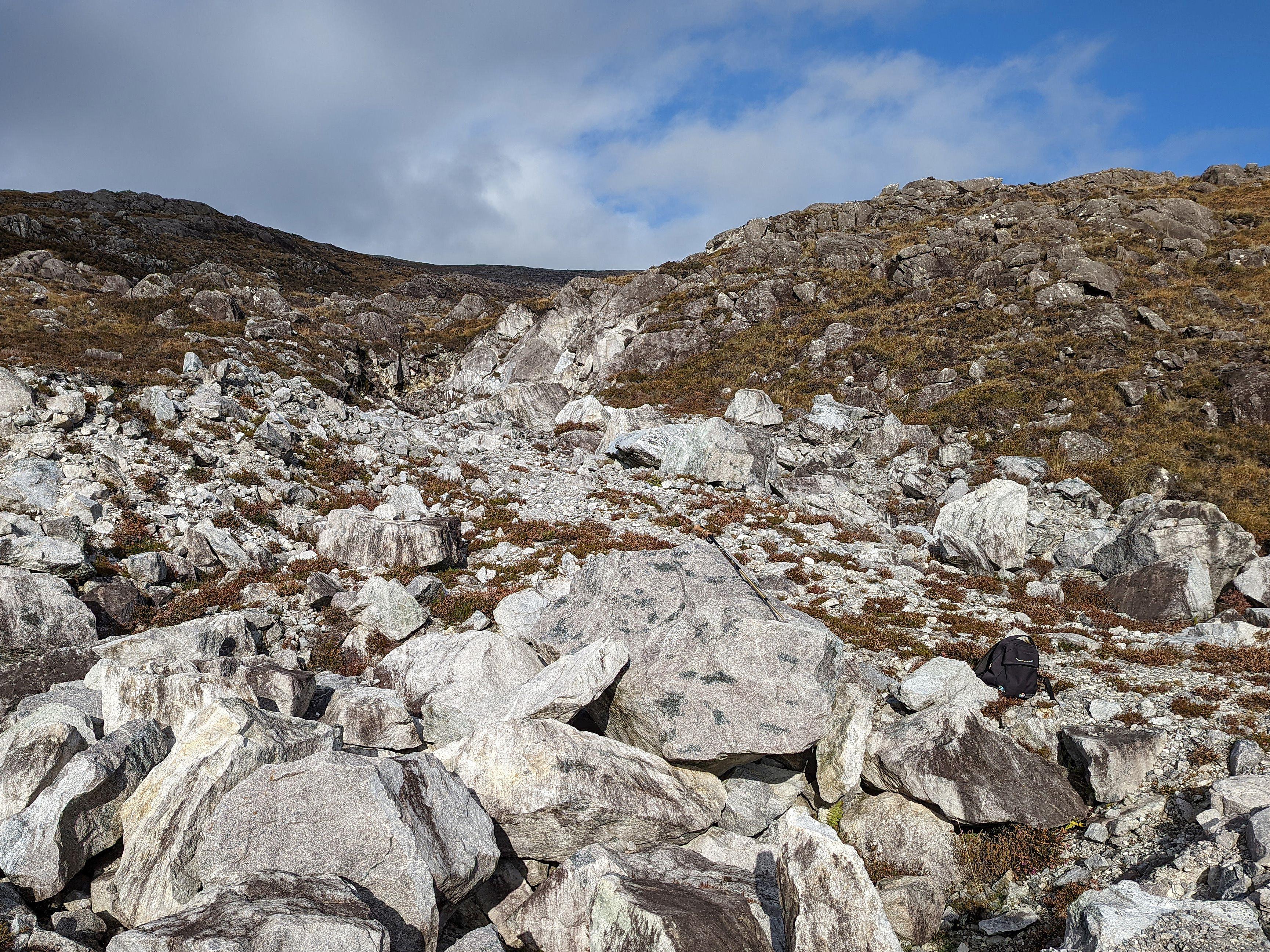South Harris Anorthosite
Geological Conservation Review site | GCR #690 | Mineralogy | Mineralogy of Scotland
Geological Conservation Review site | GCR #690 | Mineralogy | Mineralogy of Scotland
Scotland's geosites are chosen because of their local, national or international importance. Take only photos, leave only footprints: avoid causing any damage to this site. You can walk almost anywhere in Scotland without the need to ask permission or keep to paths, but you have a responsibility to care for your own safety, to respect people's privacy and peace of mind and to cause no damage.
The right of access does not extend to quarries, building sites or any land where public access is prohibited, or to the collection of geological samples.
New cuttings made in widening the Rodel-Finsbay road, together with a road metal quarry, here expose the anorthosite of the South Harris Igneous Complex. The anorthosite is an almost pure, light-grey, glassy feldspar rock with a slight greenish coloration due to epidotisation and replacement of feldspar by scapolite. Local increases in pyroxene and amphibole produce a banded rock with alternating purplish-grey and light greenish-white layers. Locally garnet is abundantly present and the pyroxene content increases markedly. Alternate layers of anorthosite and garnet pyroxenite (or metagabbro) result in a banded black and white rock. The garnets are up to 2cm diameter and invariably have dark kelyphite reaction rims. They are often slighly elongated in the folation. This banded rock is of considerable mineralogical and petrographic interest.
There are no access notes yet.
There are no safety notes yet.
There are no site highlights yet.
There are no further information notes yet.

Small road metal quarry adjacent to the C79. The highest peak is Roineabhal, (Roineval).
Pete Bowden
Sept. 30, 2024

Banding in anorthosite
Pete Bowden
Sept. 30, 2024

Large blocks of anorthosite at entrance to road metal quarry
Pete Bowden
Sept. 30, 2024